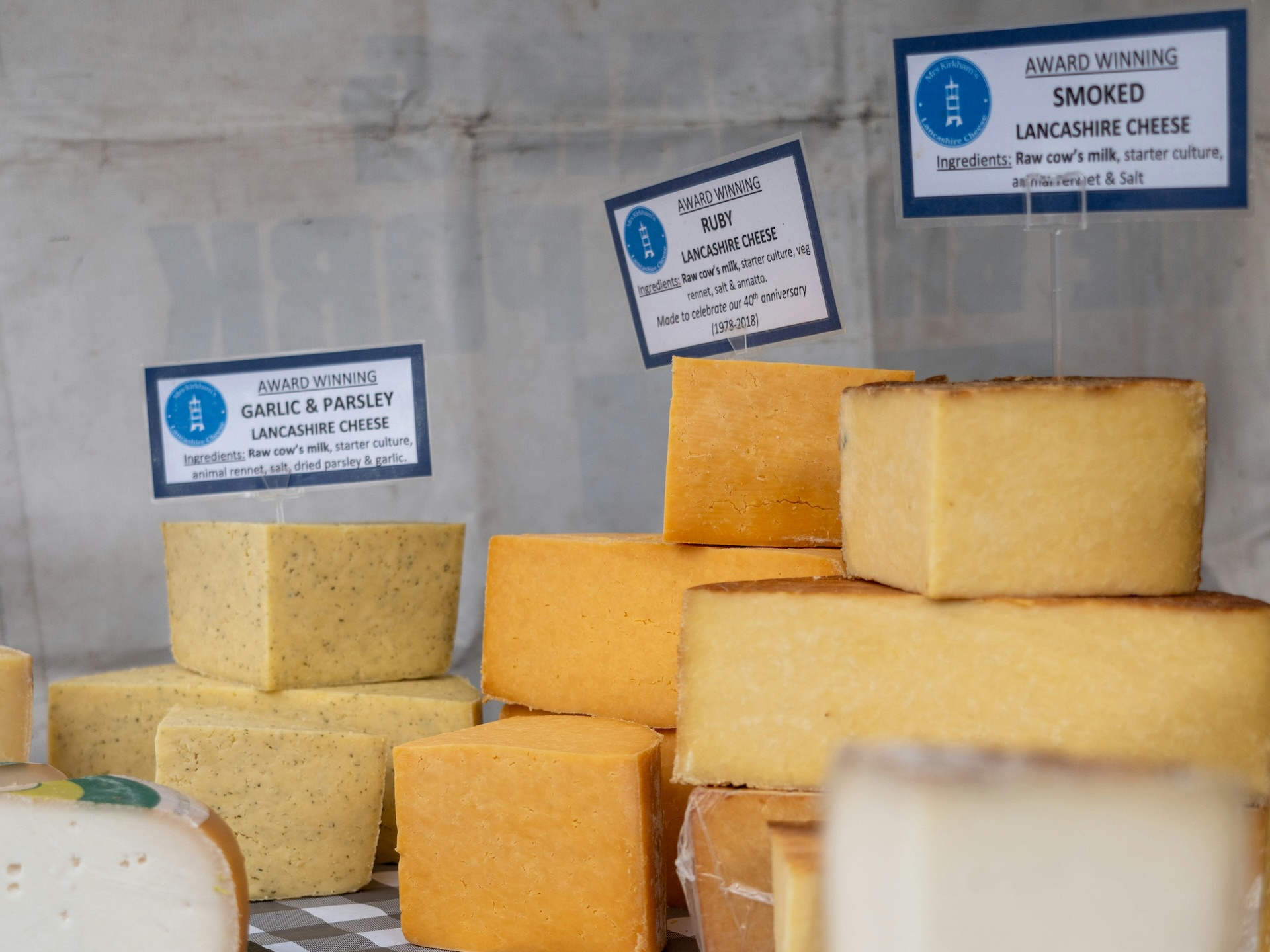
He Royal Decree 1113/2006 Define the cheese as the fresh or matured, solid or semi -helid product, obtained from the milk, the cream, the butter whey or of a mixture of some or all the products, coagulated total or partially by the action of the cuuajo or coagians autumn.
There is a great varity of cheeses, according to the milk procedure, the type of maturation or other processes. The name of the cheeses can also refer to a Denomination of protected origin (DOP) or a protected geographical indication (PGI).
Cheese types
Cheeses according to maturacia
The first classification refers to the type of maturity. The matured word can be replaced by the terms tender, semi -cured, cured, old and old, according to the degree of maturity reaches the product at the factory output.
Fresh cheeses
It is a derivative LL has not passed a mature process. “It retains much of the milk serum, contains a lot Exprace, explain, exprace, exprace, exprace, exprace, exprace, exprace, expire, expire, exprace, ex -and director of categories management – dairy products, in Aldi Spain.
In fresh cheese, no ferments are used. «In Spain it usually elaborates according to one of these processes: the ultrafiltrate and the traditional system. The difference is in thermal treatment and production process,» adds Arce.
Semi -curated cheeses
The semi -curated term defines the maturacia period. “The semi -curated cheese, by regulation it must have a minimum of 35 maturation day, although in the market we can interfere with 2 to 3 months of maturation. It is usually seaborated with mizcla of different milk topos (cow, sheep -toja toja tuede neuden neudennn moles of milk (cow, sheep -toja toja tode neuden neuden new -Toja Toja Toedenbubennnnumubenn Milk (cow, ovveja -Toja Toja ToedenbubennumubenNnemuben Milk (cow, sheep -the toja toja todeubbonnbonnumubnunbumbub found of a single type of milk, ”says Arce.
It is characterized by its soft flavor. «It is a very versatile cheese, which normal likes everyone,» says the expert.
Cured, old and old cheeses
According to normacive, a cured cheese requires a minimum of 105 day of healing, in front of the old cheese that need a ménimo of 180 day of healing, and the old cheese, with a mysnimal of 270 days of healing.
Most of the cured cheeses are mixture, while old and old cheeses are usually of goat or sheep milk, although they are also cow or mixture. Arce clarifies that «the more maturation, less moisture and a harder texture, more intense flavor and with nuances that we do not go to an entree in a cheese with minor maturation. The color of the cheese also evolves with the maturation.»
Mold cheese
During their maturation certain molds are developed in their interior, on the surface or in both parties. These cheeses can also be called ‘blue cheese’ or ‘blue pasta cheese’.
Cheeses according to the origin of milk
When the cheese is manufactured with milk different from that of cow, it must be included in its denomination after the word ‘cheese’ the indaciation of the species corresponds. That is, goat cheese, buffalo cheese, sheep cheese …
The cheeses made of two or more species milk must inform it in the product denomination, indicating the animal species from which milk proceeds in the descent of proportions. This denomination may be replaced by ‘mixture cheese’.
What milks are usually mixed and how does it affect flavor and texture?
Cow’s milk provides a softer taste, while sheep’s and goat milk add more intense, spicy or fruity notes. The Quesero master can combine these nuances to cek a peculiar flavor in each varity of cheese.
As for the texture, cow’s milk makes sea cheese more supplier and creamy. Sheep and goat lazhe, having a greater concentration of fat, provides a firmer and dense.
How to keep cheese at home
Whenever possible, it is recommended to always keep cheeses at home in their original container. «It is the most appropriate to keep the organolepts of the product intact. We must always keep them in the fridge, whether you are open and just bought,» Unai arce explanation.
The exact conservation temperature will depend on the type of cheese. Fresh and tender cheeses, convene to save them between 4-8 ° C. Hard and more cured cheeses admit higher temperatures (8-12 ° C). Queseros experts recommend Take it out of the fridge Before consuming them to temper.
- Whole cheeses. If the container is not preserved, it is recommended to wrap the cheese in plastic film suitable for food. Ideally, you have to make some holes in the film so that the moisture of the cheese does not accelerate the mold generation, and consume in the following 5/7 days.
- Cheese -compared cheese and vacuum packaging. Once open, keep in the original container and wrap in plastic film. Its consumption is recommended in the following 5/7 days.
- Grated cheese. Once open, it must be kept in the original container. If you come with ZIP closure, eliminate the air to the maximum and close proper. If you do not come with ZIP, remove the air, fold the upper part of the container and close with a clamp. Consume in the following 4/5 days.
- Cheese in slices. Once open, keep in the original container and wrap in plastic film. Its consumption is recommended in the following 5/7 days.
- Molten cheese. In this case, whether it is portions and slices, each individual packaged porcioon usually comes, so it would be enough to maintain the product in a cool and dry place, although it can bewildered fardids that I would need necessary to refrigerated spring.
- Oil cheese. To conserve the cheese in oil, it is cut in tacos, it is introduced into a glass jar and covered with extra virgin olive. They can keep an ambient temperature in a cool, dry and away place of sunlight.

Can cheese be frozen?
As a general rule, we can freeze cheese, although, depending on the type of cheese, the texture may be modified by defrosting it.
Hard cheeses retain their texture and flavor. Something happens with grated cheeses to gratin. However of sin, soft and creamy cheeses can remain too aqueous when defrosting.
To preside their properties to the maximum, convenient to freeze them wrapped in transparent film, aluminum foil or a hermetic receiver.
The Aldi Council
If you are pregnant, consume cheeses alone made with pasteurized milk. This reduces the risk of axyinfection by Listeria or other bacteria presents in food that could affect the health of the mother and fetus.

Unai Arce. Director of Categories Management – Dairy, in Aldi Spain. Professional with ampedescia, both in the industry and a retail, always linked to the lordo sector. It has been developed in companies such as Unilever, Savencia, Central Asturiana or Eroski. Realmenta leads the area of Lérteos de Aldi Spain. It is a license in psychology and research and market techniques. MBA in administration and management.







